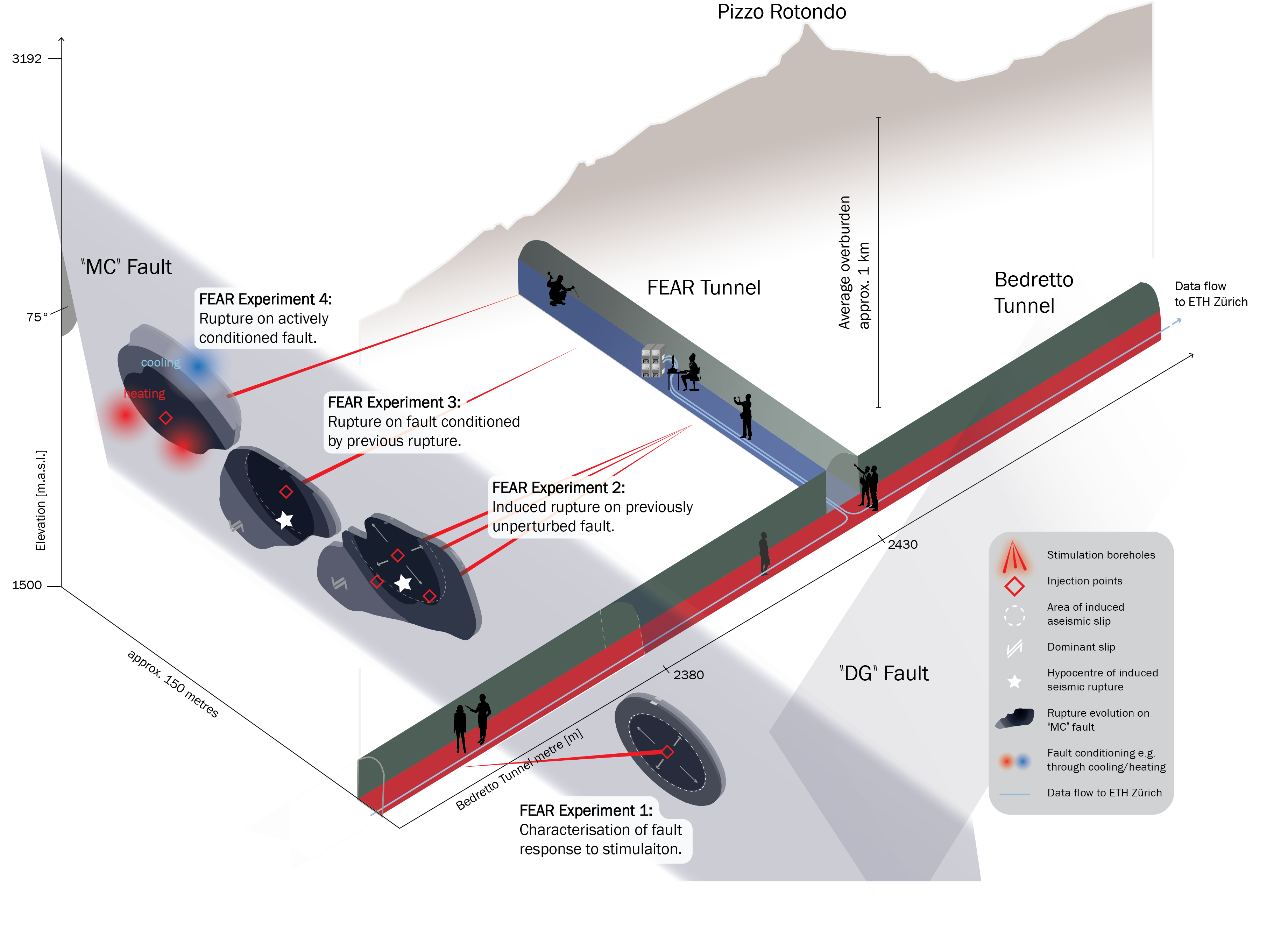2024-04-12
First long-term injection experiment starting in mid-April

The BedrettoLab team is embarking on a new phase of experiments. As part of the FEAR project, a sequence of hydraulic stimulation experiments will start in mid-April. Leveraging on insights gained from the VALTER experiments, the team plans continued injections for an extended period of two to four days, allowing the reactivation and extension of the fracture network of the reservoir created in past experiments. Scientifically, the team is focusing mainly on the seismic response of the reservoir and aims to scale up the seismicity to larger events than previously observed.
In past experiments, the largest observed micro-earthquake was about a magnitude -2; in the upcoming M0 experiment, the team strives to reach about a magnitude 0. Such an event is about 100 times larger in amplitude and releases about 1´000 times more energy than a magnitude -2. Such an event would rupture a patch of about two by two meters by about one centimetre, allowing us to study when and where such a micro-earthquake starts, how it ruptures, and when it stops. For comparison, a natural earthquake of magnitude 6 that occurs in Switzerland every 50 to 150 years ruptures a patch of 10 by 10 kilometres by one meter, releasing about 1 billion times more energy.
Magnitude 0 events have already occurred naturally in the vicinity of the tunnel, and such micro-earthquakes remain about 100 to 1’000 times too small to be felt by people in the Bedretto Valley at a distance of several kilometres. The likelihood of induced larger events that could be detected in the Bedretto Valley remains extremely low. However, even micro-earthquakes of magnitude zero to one can be felt if experienced within a few meters or tens of meters of them. To eliminate even the smallest risk to people in the tunnel, these experiments will not only be very closely monitored, but they will also for the first time be fully remote controlled. During the main injection, no people will be allowed in the tunnel. This remote-control capability will be even more important later in the FEAR project when patches of 10 meters are the target size.
During the main part of the experiment, about twenty dedicated members of the BedrettoLab team will be working in 24/7 shifts over a period of one week. Their primary task will be to monitor the pressure, flow rate, deformation, and seismicity behaviour in real-time. The geobiological and geochemical response of the reservoir will also be closely monitored, for example, to detect pre-cursors before larger ruptures. As implemented for previous experiments, two traffic light systems regulate the experiment, and if the observed vibrations or magnitude exceed pre-defined thresholds, the experiment will be ended immediately and bleed-off initiated; past experiments have shown that seismicity will then within minutes to hours decrease strongly.

